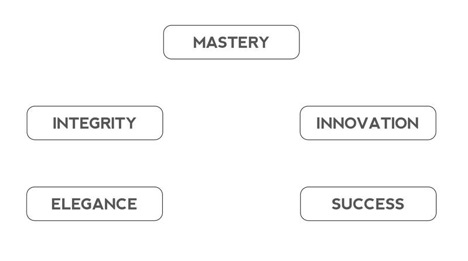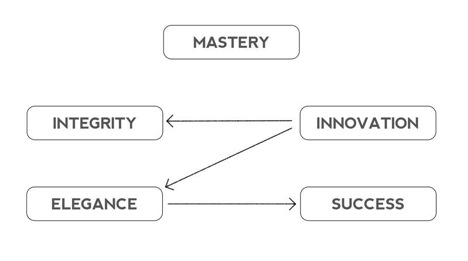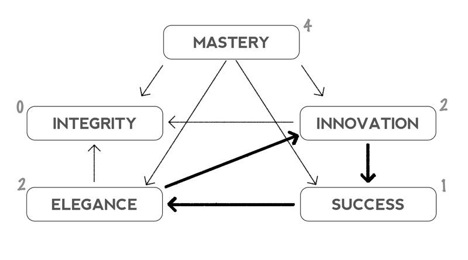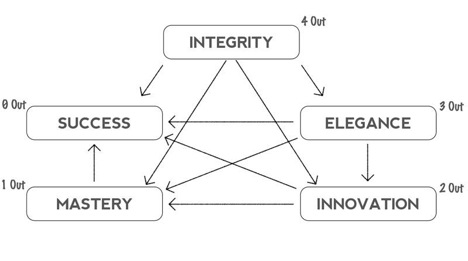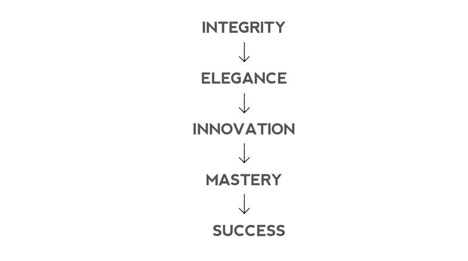Have you ever gotten into an argument that frustrated you so greatly that you shouted something aggressive and later regretted it? It’s always disconcerting when you lose control in a certain situation and look back on it afterward. Even witnessing someone else behaving in a way you wouldn’t expect can be unsettling. At times like these, it seems almost as if something has taken over our will and caused us to act like an animal. While there will always be circumstances that make us feel powerless, growing as a person means that we have to exercise self-control, especially when we start to feel like we’re losing our cool. The purpose of this article is to recognize the dichotomy between the fight-or-flight animal portion of our brain and the reasoning frontal cortex that makes us human. Imagine if we could harness the power of both those parts of our brains and get them to work together. How productive and powerful could we be if, rather than being taken over by it, we could learn to ride the animal instead?
The word “symbiosis” is comprised of the Greek words for “living together,” and a symbiotic relationship is one in which each party benefits the other. There are many situations in the natural world where two forms of life are connected in such a way that neither could survive without the other, such as when one organism obtains its nourishment by feeding on another’s parasites. Beings that operate together in this manner are referred to as symbiants. Technically, the human brain and body aren’t symbiants because they are part of the same organism, but let’s imagine for a moment that their relationship is a symbiotic one.
The frontal cortex is the highest-functioning part of the brain. It’s what makes us smart, rational people. Most of the time, the frontal cortex is in control, but when the lesser brain, which includes the amygdala and the cerebellum, perceives a threat, it becomes harder for the frontal cortex to be in charge. The lesser brain will always assert itself when the animal’s basic requirements, such as food, water, sleep and sex, aren’t being met, or when the animal is in a state of fear. Such conditions can create an internal struggle for control.
At the center of the lesser brain is the amygdala, also called the reptilian brain, which is responsible for our “fight or flight” reflex and other primal reactions. Through evolution, the brain increased in size and eventually developed the frontal cortex. Our frontal cortex is not a separate animal–it has the same DNA, grows from the rest of the body and is a part of the same system–but considering the distinction between the two regions makes it easier to examine why we do the things we do.
Let’s say that the frontal cortex is you, and the rest of your body and the lesser brain is not you; rather, it’s an animal. The body, controlled by the lesser brain, allows the frontal cortex to survive because it delivers blood, oxygen and nutrients. The animal also brings instinct and passion to the relationship. It does not necessarily need the frontal cortex in order to survive, yet the frontal cortex gives the animal a greater chance of survival due to its ability to reason. What the frontal cortex brings to the relationship with the animal is the very thing that makes us human. The frontal cortex makes survival more certain because of its excellent ability to think through problems and solve them. Our existence is made infinitely less complex by the frontal cortex’s capacity to take care of our needs well before they become emergency situations that the lesser brain needs to resolve. If we want to function at our highest capacity, then it follows that we have to harness the power of both the frontal cortex and the animal, and use it well to our advantage.
Jean-Louis Gassée on Steve Jobs:
“For a long time, I’ve seen him as having an animal inside him, the one with the desires, the instinct, the drive. In 1985, that animal threw Steve to the ground. He picked himself up at Pixar — you’d be a captain of industry for doing no more — and NeXT. Then, in 1997, armed with Pixar’s success and Next’s technical prowess, he came back to run Apple and make it really his.
He had learned to ride the animal.”
In theory, we are something that exists inside an animal. Sometimes we control the animal, and sometimes the animal controls itself. We have learned to assert control over the animal in many respects, but as much as we try to manage our behavior, in some cases, we’re out of control, as in a fight-or-flight scenario. If something appears to us as a threat, the lesser brain takes over. The frontal cortex then has nothing to say about what the body does. A lot of times when people describe events that really provoked their amygdala, they talk about it as if it were an out-of-body experience. They say things like, “It seemed as if I were watching myself do that awful (or brave) thing. I didn’t even feel like I was a part of it.” The animal was doing the action all by itself.
Some of us have learned to ride the animal better than others. That’s what childhood is all about. We don’t hold minors responsible for their actions a lot of the time because we don’t expect them to be perfect. They’re learning to ride. As adults, realizing that the most evolved part of our brain is not always in charge can give us insight about ourselves and others. We reason, think and make decisions; our body reacts. The amount of control we have over the animal varies depending on the circumstances we are in and how much we’ve prepared ourselves for that particular set of circumstances. If we’re about to drown, our frontal cortex is not going to be doing its best work. In fact, it has no control whatsoever. In a state known as Drowning Syndrome, our body responds to the sensations and takes over, trying to keep us alive. Our arms start flailing and we can’t yell for help, even though our frontal cortex says we have to, because the lesser brain is in charge. The amygdala takes over. Our body recognizes this and our minds are stuck in there panicking, waiting for the reptilian brain to save us. If we’re going to live, it’s up to the lesser brain to take care of it, and the reptilian brain has a very limited set of options: It’s either fight or flee.
Learning to ride the animal, however, lets us do more that fight or flee, and there are two ways it can be accomplished. First, we can learn to ride the animal by preparing ourselves for specific circumstances through role-playing or training. This is what firefighters, policemen, and soldiers do. They are so well-trained that, when they’re dealing with situations that would normally provoke an amygdala reaction, their body knows how to grab control of that circumstance or eliminate the need to perceive it as a threat. They just execute the actions that they were trained to perform. They’re not necessarily even thinking about it because they’ve trained the animal so well. Through repetitive training, they’ve given the animal a new option other than to fight or to flee—They’ve taught the animal new tricks.
The other way to learn to ride the animal is to practice wrenching control back from the animal, but this takes a tremendous amount of willpower. First, we have to realize when the animal is in control, and then we have to wrestle the control back. Repeatedly doing this is another way we can learn to ride the animal.
Even in situations where our lives are not in danger, the frontal cortex, for all intents and purposes, is sublimated. When someone comes up behind you and shouts “Boo!,” your body jumps. Your frontal cortex doesn’t make that decision; your body’s instincts kick in under the direction of your lesser brain. It is simply a reaction, without any thought behind it. The same thing can happen when we feel psychologically threatened. In a circumstance where we are afraid that we will look bad in front of our peers, for instance, we may react automatically by saying something we don’t really mean.
Applying the Distinction at Work
If we think of our professional selves this way, it gives us some insight into how we manage ourselves, and about how other people can be managed. For example, let’s say we have a client who feels extremely threatened psychologically when he’s not prepared for a meeting. Since the amygdala responds more often to psychological threats these days than, say, the threat of literally being devoured by a predator, it spends a lot of its time identifying possible scenarios in which it might look bad. Looking bad could derail our careers and threaten our survival, at least in the egotistical or economic sense. If this client has to participate in a meeting for which he has not had time to prepare, his animal takes over and he becomes somebody completely different. He could be the nicest guy, but with his lesser brain in control, he might start acting in a seemingly out of control way, saying nasty things to everybody. Then, when the threat has passed, that same client would probably apologize, saying, “I don’t know what got into me! I’m sorry I said that. It’s really not like me at all.” Just like a person whose strength is greatly multiplied in a life-or-death situation, the amygdala is bolstered by threats and becomes manic. We then consider the event, when we are back to utilizing our frontal cortex, and see it as something that was out of our control for a short while. We shake our heads in disbelief that we acted like an animal, instead of a rational human being. Us? Animals? Yes, even as evolved as we like to think we are.
The amygdala also has an impact on the adrenaline in our bodies. When we’re threatened, chemicals are released into the blood stream, blood vessels constrict, and blood rushes to the center of our bodies toward our vital organs in case it’s needed, which causes our extremities to tingle. The body is preparing for an actual physical altercation, even though we may be experiencing only a psychological threat. It does this by conserving blood so we won’t bleed to death, at least not right away, should an arm or leg get lopped off. It seems kind of funny that this is what the body is preparing for, even when the mind is only worried that colleagues may laugh at our presentation.
The extra adrenaline that the body is producing in times of high stress does provide more focus (in fact, we can’t think about anything else if we try), in addition to the physical strength and endurance for which the response system was originally designed. Now, we run in our minds rather than with our feet more often than not until we find our way to “safety.” When considering the animal then, we ought to realize that we’re dealing not just with the emotions caused by the amygdala, but also with the body drugging itself. It’s a reinforcing loop, because as the amygdala switches on and becomes manic, it also releases chemicals into our bodies that make us more aggressive. We are catapulted into a fight-or-flight response. While this may on the surface seem like a position of strength and power, we are actually out of control in these moments, and because we are business professionals, we really want to consider coming down off that high and back to rationality as quickly as possible. As the frontal cortex wrenches back control, we will experience the heart’s thudding returning to a normal beat and pressure, and we will again be able to think logically and without exaggerated, protective emotion. The front cortex will perceive that this is not actually a fight, and it can simply choose its next course of action or words carefully.
It’s worth mentioning that some of us really like to pretend that we’ve got our animal well under control in our working life. But it’s likely that when we are at home, we are loved despite the fact that our family members know better. When we’re having a conversation with our spouse, for example, a lot of fights happen when our lesser brain feels threatened and takes over. Then things get really ugly.
Satisfying the Animal
We can put this distinction to work by recognizing when someone’s lesser brain is in control. Then we have two choices: satisfy the animal, or disengage. In most cases, we need to resolve the issue so we can continue the relationship; therefore, we need to come up with a way to satisfy whatever the lesser brain is worried about. If it thinks we’re drowning, we have to get on dry land. If it thinks it’s going to look bad, we have to reassure it that it will look fabulous.
Give the lesser brain what it wants.
The answer isn’t to try to just plow through the situation, because the lesser brain will not just let it go. It’s not designed that way. It doesn’t reason; it just takes charge, and it has a singular focus. Many people have a problem with overeating, for example. It becomes an addiction. They don’t want to gain more weight, but they crave mass quantities of food, much more than they need to survive. Their lesser brain is taking control and making them do it. Some people even require professional help to figure out how to control their animal.
This is not to say that people shouldn’t be responsible for what their animal does. Part of being an adult is learning to assert control and to understand the control we do have, as well as our limits, so that we can avoid situations that tend to erode our control. This maturity should also extend to circumstances when we’re involved with someone who is out of control, not behaving properly or reacting in a bad way. We can peg it on the animal and know that the only way to get out of the situation is to get that animal happy so the person can return to a rational state. A lot of times people try to rationalize with someone who is under the animal’s control instead of waiting for the frontal cortex to be in charge again so they can talk to the human being. Or they temporarily turn into animals themselves and attack back because they’re threatened. The latter scenario might be entertaining on an episode of Animal Planet, but we definitely want to avoid it in our professional and personal lives.
Learning to Ride the Animal
In the book The Power of Now, Eckhart Tolle talks about how we tend to exist in a state of perpetual anxiety. When we’re feeling anxious, we’re not thinking about now. We’re thinking about what’s going to happen, or what already happened to us. It gets to the point of obsession and makes us irrational. We can liken this to the animal being in charge. We can’t think rationally when our lesser brain is overly anxious. We have to train it to be less anxious, and we do that by training it to trust the situation it’s in.
“The mind is a superb instrument if used rightly. Used wrongly, however, it becomes very destructive. To put it more accurately, it is not so much that you use your mind wrongly—you usually don’t use it at all. It uses you.”–Eckhart Tolle
Think about what part of the body, which of the two symbiants, is in charge under certain circumstances. Is it the lesser brain and body, or the frontal cortex? The lesser brain manages the body. It determines if we’re hungry or threatened, it keeps our hearts beating, it determines if we want food, water and other built-in needs.
The frontal cortex cannot manage the body unless the lesser brain is satisfied.
We all know the distraction that arises in our minds when the lesser brain is creating noise and our frontal cortex is arguing with our body. When we’re really anxious about something, we start to think about it obsessively, the same things over and over again, whether it’s money, jealousy, an insulting interaction or anything else with strong emotional connotations. We have some physical responses to the psychological threat. Our pulse rate goes up, we start to sweat, etc. We worry about what did happen and what will happen, and we connect all types of similar experiences we’ve had until we’re in quite a tizzy. I’m sure you’ll agree that these are very unproductive time periods. All of that noise, that voice in our heads, is our lower brain. It’s not us.
We have to cohabitate with that animal, and what makes it more difficult is that it knows how to speak to us a little bit. It tells us, in scared or angry tones, about what it’s worried about. It’s a nervous, primeval little creature that is only concerned with self-protection. It sizes someone up and asks, “Is this going to eat me or am I going to eat it?” It responds to workplace stress by thinking “Am I going to lose my nest, my place to live?” That’s something an animal worries about, and it doesn’t leave much room for higher thought processes.
In the aftermath of a hurricane, a woman and her family were being interviewed by a television crew about the loss of her home. She was absolutely distraught. She told the crew that she was having a hard time holding it together with her husband and children because all of her emotions were intensified. They were starting to fight and there was a lot of tension. She was clearly, and understandably, in the grip of her animal because she had lost her nest and everything in it.
People experience this animal response to change on a regular basis. The animal is always uncertain about change, even in relatively ordinary circumstances. Perhaps we now have to answer to a new boss. This person may be a better boss in every aspect than our previous one, but we’re still going to be cautious and suspicious until we see how this change affects us. If someone goes into the office on Monday and the ugly chair at his desk has been swapped for a different ugly chair, he’s likely going to be freaking out, at least mentally. It’s unexpected, confusing change, and the individual’s mind may race thinking that someone is trying to control his small prescribed area and taking things from his nest without asking—stealing! Stealing from his nest! The amygdala, if not kept in check, can quickly spiral out of control to ruin this poor guy’s day. And it’s just a chair. Now imagine he goes to investigate and a coworker casually tells him, “Oh, they moved you to a different office. So-and-so is working from there now.” It’s not the loss of the office or the chair that’s so upsetting; it’s the change that is driving the amygdala response, just as the woman who lost her house in the hurricane is experiencing stress not for the loss of shelter but because of change. Change causes an amygdala response because it makes what we thought was certain now uncertain. We think, “What’s next?”
To return to a place where we are in control, the animal needs to be soothed. The severity of the threat will determine what it will take to get it to act in accordance with its previous training. In dire circumstances, like the example above, it would take great inner strength to operate at maximum rational capacity despite the absence of what we have come to see as essential needs. In the normal course of a day, however, we still face many perceived psychological threats, and we can deal with them more effectively if we train the animal to be satisfied. That is how we stay in control of ourselves. If the animal is not satisfied, we are not in control. Again, that doesn’t mean we aren’t accountable for what we do, because we are responsible for learning how to exert greater and greater control over our animal under a wider variety of circumstances as we grow as human beings.
Gaining the Animal’s Trust
A good deal of anxiety comes from lack of trust. The animal has to be trained to trust. It also has to be trained for self-restraint; otherwise, we’ll just do what we want. Our animals need good reasons why they should behave, and they have to be couched in concerns that the animal cares about, not what the frontal cortex cares about. The reason people don’t go around stealing from each other isn’t because the frontal cortex is telling them not to steal but because the lesser brain realizes that there are consequences. It might look bad if we get caught, or it might lose its nest and end up locked in a cage instead. The lesser brain understands the consequences. Society helps to train the lesser brain by imposing consequences.
We might be tempted to think that some people, maybe even ourselves, operate in an altruistic bubble. But even the most pious individual would probably steal food for a starving child. Doing the right thing is not an absolute for anyone. We may not be the type of people who steal cars for the thrill of it, a thrill being a positive consequence, but we all need to weigh possible outcomes and make hard decisions sometimes.
Planning Ahead
This distinction is useful for understanding our own behavior, others’ behavior, how to make ourselves trust, and how to get others to trust us. We can help ourselves and the people with whom we are involved stay out of circumstances where they might lose control. In the case of the client who gets nervous before a presentation, we can provide his frontal cortex with everything it needs to know 24 hours before the meeting so the client can feel confident that it will go well and the lesser brain can sleep until it’s over. In the case of the overeater, the frontal cortex can get pretty good at thinking ahead. It begins to accept that, regardless of what it knows is rational, the lesser brain will take over and cause the body to overeat. To prevent the undesirable outcome of continuing to gain weight, the frontal cortex, in its comfort zone, can make the decision to eat a little bit now to avoid losing control later. Because if it lets the animal eat, it’s going to chow down.
Preparation is one of the best tools we can use to control the animal.
Like policemen, firemen and soldiers, we can use training to prepare ourselves for future circumstances that may pose a threat. This training will help us to react automatically in a way that will preserve the integrity of our desired outcome. It will help us do so confidently and with conviction. And these positive experiences, when we come away from a projected situation unscathed and intact, will themselves act as training.
We should also know ourselves enough to foresee that certain circumstances are likely to have negative outcomes for us. If we have that knowledge and continue to put ourselves in bad positions, we’re responsible for any negative outcome. And when we recognize that someone has fallen prey, once again, to their particular animal pattern, we can use this knowledge to deal with them in a different way than we would when they’re being rational. Understanding the animal so we can keep it out of trouble is critical to being our best selves, but we can also endeavor to go beyond that and harness the animal’s power to help us accomplish great things.
© 2012 Ralph Dandrea. All rights reserved.

